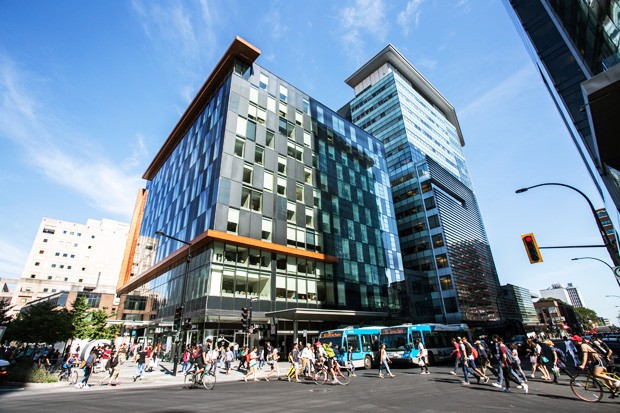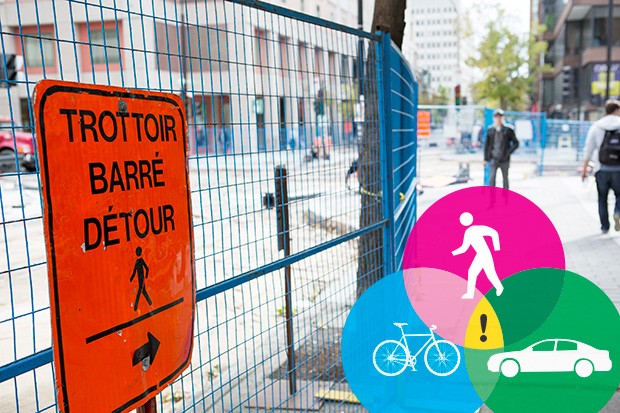‘Sharing the street is everyone’s business’

When it comes to road safety — whether you’re driving, cycling or walking — being aware of your surroundings is key.
“Pedestrians today are distracted by electronic devices, and often they aren’t paying attention long enough to make sure they’re not walking into traffic,” says Lyne Denis, an investigator and preventionist with Concordia's Security Department.
“There are many risks in crossing a busy intersection — like Guy and De Maisonneuve — even on a green light. Imagine someone doing that while texting. When you’re not aware of what’s going on around you, you put yourself at risk.”
That’s why it’s important for pedestrians to move with care when crossing busy streets, Denis says. And the same goes for cyclists and motorists.
“Sharing the street is everyone’s business.”
Put down that phone
With both the Loyola and Sir George Williams campuses situated along busy streets, the safety of pedestrians as they negotiate these roadways is an important priority for the Security Department.
“People need to focus on the road. I frequently see people texting while walking or reading a book or a tablet when crossing a street,” Denis says.
When it comes to wearing headphones or ear buds, she recommends that pedestrians only use one side of the listening devices, so they remain aware of their immediate surroundings.
She also reminds cyclists and drivers to pay attention to traffic signals and acknowledge, follow and respect pedestrian crossing signs.

Tips for pedestrians
- Always cross the street at an intersection, not at the middle of a block.
- Know that jaywalking is illegal and you can be fined.
- Obey all traffic signs and signals at intersections.
- Always check that the intersection is clear and that drivers and cyclists see you before stepping onto a crosswalk or road.
- Look both ways before you cross the street — especially given the added safety concerns brought on by bicycle paths (which you should never walk along) and construction zones.
- Follow the rules and yield to traffic with the right of way. Do not assume traffic will stop for you; always assess your own safety before proceeding.
- Staying safe also means watching for drivers who make unexpected manoeuvres.
- Make yourself visible to drivers and cyclists: wear reflective or light clothing at night, stay in well-lit areas and make eye contact with drivers or cyclists prior to crossing their path.
- Don’t text or talk on your phone when walking. If you wear headphones, leave one ear free. You need your senses to avoid accidents.
- Stay on the sidewalk whenever possible.
- Do not walk in a vehicle’s blind spot.
- Do not cross an intersection diagonally unless signs or police officers indicate otherwise.
- Remember where you have the right of way:
- Pedestrian lights: during walk (white silhouette) or flashing hand signal
- Traffic lights: on the green light only
- Stop signs at intersections: at all times
Tips for cyclists
- Wear a helmet and ensure it is adjusted properly.
- Ride in a straight line.
- If there is more than one lane, ride in the far right one.
- Signal turns and lane changes and check to ensure your path is clear.
- Watch for vehicle tail lights to signal turns or stops.
- Watch vehicle occupants to avoid being hit by an opening car door.
- Make eye contact with drivers before proceeding into an intersection to ensure they will yield the right of way.
- Use bike lanes where possible.
- Cyclists must yield to pedestrians at intersections.
- Ride single file if you’re travelling with other cyclists.
Denis also reminds cyclists that the following accessories are mandatory for their bicycles:
- Rear red reflector
- Front white reflector
- Reflectors on spokes of both wheels, visible from either side
- Amber reflectors on both pedals
Find out more about secure bike parking at Concordia.




